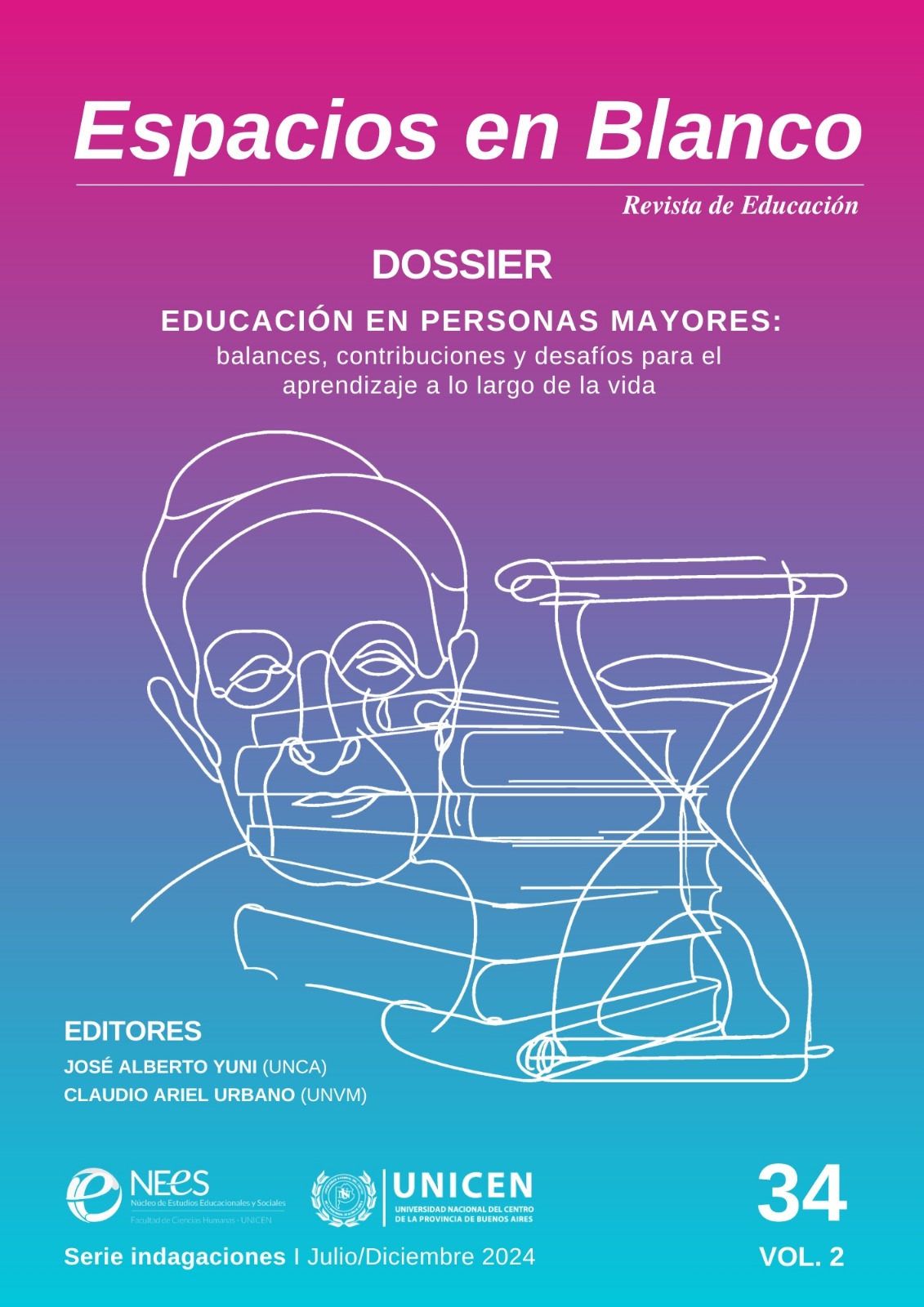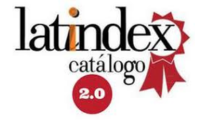Modelo de aula Ubicua en el entorno de aprendizaje mixto con enfoque social en la educación universitaria
DOI:
https://doi.org/10.37177/UNICEN/EB34-409Palabras clave:
b-Learning, educación superior, redes sociales, Sistemas de gestión de aprendizajeResumen
El modelo propuesto tiene como meta fusionar el aprendizaje que ocurre en el entorno físico o presencial con el entorno virtual, logrando una integración armoniosa entre los sistemas de gestión de aprendizaje y las redes sociales. Mediante esta integración se persigue impulsar un enfoque de aprendizaje que fomente la colaboración, la comunicación y la interacción en el ámbito de la educación superior. Esta innovadora propuesta, desde la perspectiva del aprendizaje mixto, logra amalgamar la formalidad característica de los sistemas de gestión de aprendizaje con la espontaneidad inherente a las redes sociales. Esta sinergia permite aprovechar las virtudes distintivas de cada plataforma, con el propósito fundamental de agilizar la interacción y el intercambio de información entre docentes y estudiantes. Como resultado se busca enriquecer significativamente la vivencia de aprendizaje, mejorando así la calidad y efectividad del proceso educativo.
Citas
Alkis, N., Coskunçay, D. F. & Yildirim, S. Ö. (2014). A systematic review of technology acceptance model in e-learning context. ACM International Conference Proceeding Series, 10-12-Sept. DOI: https://doi.org/10.1145/2662253.2662308
Alloway, T. P., Horton, J. & Alloway, R. G. (2013). Social networking sites and cognitive abilities: Do they make you smarter? Computers and Education, 63, 10-16. DOI: https://doi.org/10.1016/j.compedu.2012.10.030
Bastos, M. T. (2015). Outcompeting traditional peers? scholarly social networks and academic output. Proceedings of the Annual Hawaii International Conference on System Sciences, 2015-March, 2043-2052. DOI: https://doi.org/10.1109/HICSS.2015.244
Cabero-Almenara, J., Arancibia, M. L. & Del Prete, A. (2019). Technical and didactic knowledge of the moodle LMS in higher education. Beyond functional use. Journal of New Approaches in Educational Research, 8 (1), 25-33. DOI: https://doi.org/10.7821/naer.2019.1.327
Cabero Almenara, J. & Marín Díaz, V. (2013). Percepciones de los estudiantes universitarios latinoamericanos sobre las redes sociales y el trabajo en grupo. RUSC Universities and Knowledge Society Journal, 10 (2), 462-477. DOI: https://doi.org/10.7238/rusc.v10i2.1728
Costley, Jamie. (2016). The Effects of Instructor Control on Critical Thinking and Social Presence: Variations within Three Online Asynchronous Learning Environments. The Journal of Educators Online, 13 (1), 194-217. Recuperado de https://www.thejeo.com/archive/archive/2016_131/fishmunajontuepdf
Costley, J. & Henry, C. (2017). Interactive Technology and Smart Education Article information : Video lectures in e-learning : effects of viewership and media diversity on learning , satisfaction , engagement , interest , and future behavioral intention. Newcastle Australia, 4 (1).
Dabbagh, N. & Kitsantas, A. (2012). Personal Learning Environments, social media, and self-regulated learning: A natural formula for connecting formal and informal learning. Internet and Higher Education, 15 (1), 3-8. DOI: https://doi.org/10.1016/j.iheduc.2011.06.002
Dumpit, D. Z. & Fernandez, C. J. (2017). Analysis of the use of social media in Higher Education Institutions (HEIs) using the Technology Acceptance Model. International Journal of Educational Technology in Higher Education, 14 (1). DOI: https://doi.org/10.1186/s41239-017-0045-2
Ellis, R. K. (2009). Learning Managament Systems. Alexandria, VI: American Society for Training & Development (ASTD). Recuperado de https://s3.amazonaws.com/academia.edu.documents/32476291/www.astd.pdf?AWSAccessKeyId=AKIAIWOWYYGZ2Y53UL3A&Expires=1531982300&Signature=UdM18dr0cm8nwPQ4vPxZuKWz4QE%3D&response-content-disposition=inline%3B filename%3DWww.pdf
García, A. V. M., Pérez Gutiérrez, B. M. & Lucas, J. M. (2021). Fases de implementación de Blended Learning en las universidades españolas. Estudio basado en análisis de segmentación.: Blended Learning en las universidades. Revista Portuguesa de Educação, 34 (1), 28-49.
Gómez-Aguilar, M., Roses-Campos, S. & Farias-Batile, P. (2012). El uso académico de las redes sociales en universitarios. 19 (38), 131-138.
Hastiea, M., Hung, I. C., Chen, N. S. & Kinshuk (2010). A blended synchronous learning model for educational international collaboration. Innovations in Education and Teaching International, 47 (1), 9-24. DOI: https://doi.org/10.1080/14703290903525812
Hew, K. F. (2015). Towards a Model of Engaging Online Students: Lessons from MOOCs and Four Policy Documents. International Journal of Information and Education Technology, 5 (6), 425-431. DOI: https://doi.org/10.7763/ijiet.2015.v5.543
Hidalgo-Cajo, B. G. (2018). Data mining in Learning Management Systems in University Education. 115-128. Recuperado de https://dialnet.unirioja.es/servlet/articulo?codigo=6681865
Hidalgo-Cajo, B. G., Hidalgo-Cajo, D. P. & Hidalgo-Cajo, I. M. (2017). El impacto de las redes sociales como herramientas de comunicación, interacción y colaboración en el proceso enseñanza aprendizaje en la educación superior. SATHIRI, 12 (104-113). Recuperado de http://revistasdigitales.upec.edu.ec/index.php/sathiri/article/view/56/96
Hidalgo-Cajo, B. G., Rivera-Escriba, L. A. & Delgadillo-Avila, R. (2019). Virtual Communities of Learning : New Challenges in Teaching Learning Process in Higher Education. Indian Journal of Science & Technology, 12 (March). DOI: https://doi.org/10.17485/ijst/2019/v12i10/139882
Hidalgo-Cajo, B., Hidalgo-Cajo, I., Mayacela-Alulema, A., Hidalgo-Cajo, D. & Satán-Gunza, L. (2023). Análisis comparativo entre profesores y estudiantes frente al uso de MOODLE en la Educación Superior en tiempos de pandemia. Revista d’Innovació Docent Universitària, 15, 107-121. DOI: https://doi.org/https://doi.org/10.1344/RIDU2023.15.9
Hidalgo, B. G., Rivera, L. A. & Delgadillo, R. S. (2019). Integration of Learning Management System Technology and Social Networking Sites in the E-Learning Mode : A Review and Discussion. ASEE Computers in Education (COED) Journal, 10 (2), 1-13. Recuperado de http://asee-coed.org/index.php/coed/article/view/418
Kerimbayev, N., Kultan, J., Abdykarimova, S. & Akramova, A. (2017). LMS Moodle: Distance international education in cooperation of higher education institutions of different countries. Education and Information Technologies, 22(5), 2125-2139. https://doi.org/10.1007/s10639-016-9534-5
Marimon-Martí, M., Cabero, J., Castañeda, L., Coll, C., de Oliveira, J. M. & Rodríguez-Triana, M. J. (2022). Building knowledge in the digital age: challenges and reflections. Revista de Educación a Distancia, 22 (69), 1-32. DOI: https://doi.org/10.6018/RED.505661
Morán, R. C. D. & Agüero Corzo, E. del C. (2021). Aprendizaje a distancia e integración tecnológica por la pandemia del Covid-19 en Perú. Revista Eduweb, 15 (1), 98-111.
Oakes, K. (2002). E-learning. T+ D, 56(3), 73-75.
Pérez Tornero, J. M. & Tejedor Calvo, S. (2016). Ideas para aprender a aprender: manual de innovación educativa y tecnología. Barcelona, España: Editorial UOC.
Piaget, J. (1975). L’équilibration des structures cognitives: problème central du développment. París, Francia: Presses universitaires de France.
Rienties, B., Giesbers, B., Lygo-Baker, S., Ma, H. W. S. & Rees, R. (2016). Why some teachers easily learn to use a new virtual learning environment: a technology acceptance perspective. Interactive Learning Environments, 24 (3), 539-552. DOI: https://doi.org/10.1080/10494820.2014.881394
Sharma, A. & Vatta, S. (2013). Cloud Computing: Taxonomy and Architecture, 2 (5), 379-383.
Sun, P. C., Tsai, R. J., Finger, G., Chen, Y. Y. & Yeh, D. (2008). What drives a successful e-Learning? An empirical investigation of the critical factors influencing learner satisfaction. Computers and Education, 50 (4), 1183-1202. DOI: https://doi.org/10.1016/j.compedu.2006.11.007
Veeramanickam, M. R. M. & Radhika, N. (2014). A smart E-Learning System for social networking. International Journal of Electrical and Computer Engineering, 4 (3), 447-455. DOI: https://doi.org/10.11591/ijece.v4i3.5933
Villalobos Claveria, A. & Melo Hermosilla, Y. (2020). Creatividad y transferencia didáctica en la acción pedagógica de docentes universitarios chilenos. Cuadernos de Investigación Educativa, 11 (2), 35-54. DOI: https://doi.org/10.18861/cied.2020.11.2.2992
Vygotsky, L. S. & Cole, M. (1978). Mind in society: Development of higher psychological processes. Massachusetts, Estados Unidos: Harvard university press.
Watson, W. R. & Watson, S. L. (2007). An argument for clarity: What are learning management systems, what are they not, and what should they become? TechTrends, 51, 28-34.



















